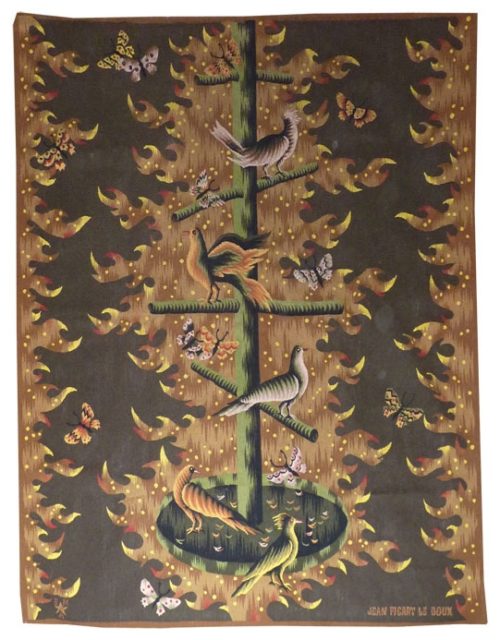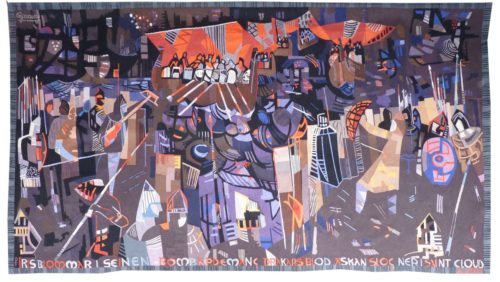Rendez-vous des oiseaux (the bird's meeting point)
Aubusson tapestry woven in the Berthaut workshop.
With label.
1951.
Jean Picart le Doux is one of the foremost figures in the renaissance of the art of tapestry. His earliest contributions to the field date back to 1943 when he designed cartoons for the passenger ship “la Marseillaise”. A close associate of Lurçat, whose theories he would adopt (limited palette, numbered cartoons...), he was a founding member of the A.P.C.T. (Association des Peintres-cartonniers de Tapisserie), and soon after, a teacher at the Ecole Nationale Supérieure des Arts Décoratifs. The state gave him several commissions most of them at the Aubusson workshop, and some at the Gobelins : the most spectacular of these being for the University of Caen, the Theatre in Le Mans, the passenger ship France or the Prefecture of the Creuse département ... In as much as Picart le Doux’s aesthetic is close to that of Lurçat, so also is his insipiration and his subject matter, although in a register which is more decorative than symbolic, where he brings together heavenly bodies (the sun, the moon, the stars...), the elements, nature (wheat, vines, fish, birds...), man, literary quotation ...
Birds are a recurring motif of the artist in the first half of the 50s, as well as the flames punctuated by dots on the rim, one of Picart le Doux's signatures. Moreover, the limited chromatic range is reminiscent of traditional "verdures" tapestries. This tapestry is reproduced in Bruzeau's book, as No. 30.
Bibliography :
Maurice Bruzeau, Jean Picart le Doux, Murs de soleil, Editions cercle d'art, 1972



